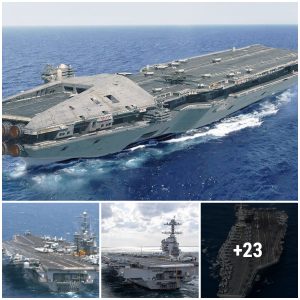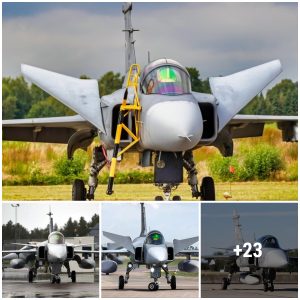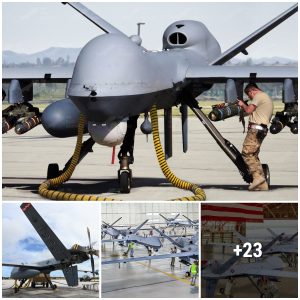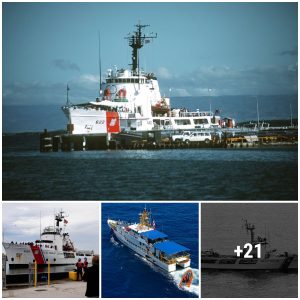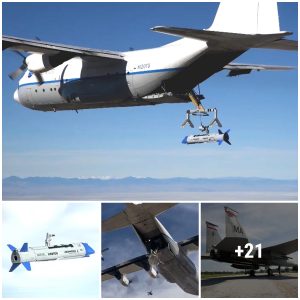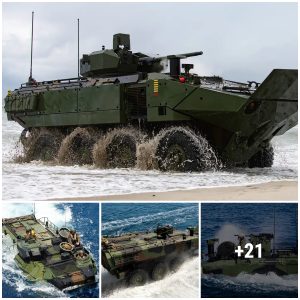More than 4,600 F-16s have rolled out off the assembly line since it first took to the sky in 1974, and even amid this era of stealthy supercomputers like the F-35 Joint Strike Fighter, the F-16 force remains the backbone of America’s air dominance. With some 1,245 of the fighter still in operation under the Air Force’s banner, the F-16’s broad multi-role capabilities and sheer performance make it one of the world’s top fighter jets, despite being old enough to have seen the original “Star Wars” in theaters.

Today, F-16s fly for the United States, Israel, Pakistan, Turkey, Egypt, the Netherlands, Norway, Belgium, and more… but the most surprising place this highly capable 4th generation fighter may have ended up is on the deck of America’s supercarriers. Shortly after the F-16 won the Air Force’s new Air Combat Fighter (ACF) contract in 1975, then-Secretary of Defense James Schlesinger pushed the U.S. Navy to adopt the new fighter as well.
The F-16 had performed well in its pursuit of the Air Force contract, and if the Navy could also find use for the Fighting Falcon, Schlesinger reasoned, the Defense Department could procure the jet in higher numbers and streamline logistics for both branches.
This line of thinking, of course, would eventually lead to the acquisition nightmare that has been the F-35 Joint Strike Fighter, which was also intended to be a single fighter platform that could meet the disparate needs of the Air Force, Navy, and Marine Corps, as well as foreign buyers. The F-16, then, could have become a similar boondoggle (or maybe proven the concept sound) if the Vought Model 1600, or carrier-capable F-16, had ever made it into service.

In order for the YF-16 to find its destiny as the Air Force’s workhorse fighter, it first had to contend with stiff competition in the form of Northrop’s YF-17. The YF-17 was a lightweight prototype fighter first designed to serve as a lower-cost alternative to America’s most dominant air superiority fighter in the modern era, the F-15 Eagle. In the minds of military leaders, the large, powerful, and expensive F-15 brought more power to bear than was really necessary for many combat operations, and as such, a cheaper but still highly capable jet could complement America’s fleet of Eagles by assuming those lower stakes roles.
Ultimately, the YF-16 would outperform the Northrop’s YF-17 in testing oriented specifically toward the Air Force’s needs, but it wouldn’t be the last time these two highly-capable platforms would find themselves competing over a contract. In fact, as the Navy mulled over the idea of converting the F-16 for carrier use, it once again found stiff competition in the form of Northrop’s YF-17.
Neither General Dynamics (the maker of the F-16) nor Northrop (who made the YF-17) had ever built a carrier-fighter before. With a lucrative contract on the line, both firms sought out partners with carrier-aircraft experience. General Dynamics teamed up with Vought to convert their new F-16 Fighting Falcon into the Vought Model 1600, and Northrop paired off with McDonnell Douglas to improve upon their YF-17 design.
The new iterations of both of these fighters had to place a larger emphasis on the Navy’s primary needs at the time: Namely, long-range radar capabilities for intercept missions and multi-role capabilities to support the sort of air-to-ground combat operations America has come to leverage heavily throughout the past few decades.

It seems counterintuitive today, with the F-16 so expertly filling the role of an attack aircraft as well as a fighter, but the original concept behind the F-16 was to create a no-frills fighter built to do nothing but dominate the skies. Its designers at General Dynamics, internally known as the “Lightweight Fighter Mafia,” sought to keep the “gold-plating” they believed common in new fighter programs away from their new jet.
“Gold-plating,” in their minds, including a number of things we now think of as practically standard in a 4th or 5th generation fighter, like fire control radar, electronic countermeasures for flying in highly contested airspace, radar-guided missiles, and–perhaps most importantly–ground attack capabilities.
By the time the F-16A began to emerge, it would have some of that gold-plating the “Lightweight Fighter Mafia” so disdained, like an AN/APG-66 radar and some intrinsic ground-attack capabilities. It still lacked radar-guided air-to-air weapons, forgoing them in favor of the heat-seeking Sidewinder missile. These additions made the F-16 a better

candidate for the Navy’s needs than it would have been as originally imagined, but it still didn’t quite fit the bill.
In order to meet the needs of the Navy, the Vought 1600 was larger than the F-16A, stretching some three feet longer, with a 33-foot 3-inch wingspan that was a full two feet broader than the Air Force’s version of the fighter. The breadth of the wings grew, covering a total of 269 feet and giving the aircraft better stability at lower speeds. The fuselage was flattened a bit and made broader, and its canopy was designed to pivot forward, which was different from the F-16, but can now be found on the F-35.
In order to withstand carrier landings, heavier duty landing gear had to be affixed to the Vought 1600’s belly, alongside the standard carrier equipment like a landing hook. The fuselage itself was made stronger and in order to offer the engagement range the Navy needed, a pulse-doppler radar for beyond visual range targeting was also added.
